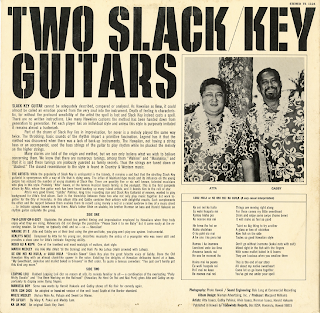Rap You Trouble In Drums
Classic Shearing
The George Shearing Quintet
A&R Research and Coordination: Don Cerulli
Director of Engineering: Val Valentin
Cover Art: Jon Henry
Art Director: Acy Lehman
Design: Don Saffer/Bob Nasasi
VVSP Verve SPS-9
Personnel:
Good To The Last Bop (Recorded Feb. 17, 1949) Shearing, accordion; Marjorie Hyams, vibes; Chuck Wayne, guitar; John Levy, bass; Denzil Best, drums.
Quintessence (Recorded Feb. 2, 1951) and For Evans Sake (Recorded Feb. 7, 1951) Don Elliott, xylophone, replaces Hyams.
Brainwave (Recorded May 10, 1951) and Simplicity (Recorded May 16, 1951) Al McKibbon, bass, replaces Levy.
Appreciation (Recorded Oct. 2, 1951), Joe Roland, vibes, replaces Elliott.
Rap Your Troubles In Drums (Recorded March 13, 1953), Cal Tjader, vibes, replaces Roland; Jean "Toots" Thielemans, guitar, replaces Garcia.
Ill Wind (Recorded Sept. 2, 1953), Cataline Rolon, shaker, and Candido Camero, bongo drums, added for this session only.
Get Off My Bach (Recorded March 26, 1964), George Devins, vibes, replaces Trader.
From the back cover:
The George Shearing Quintet first recorded in the studios of Discovery Records on February 8, 1949. The group cut eight titles. Nine days later Shearing's Quintet made the first of more than 100 sides for MGM Records under a contract that ran through the summer of 1954. Some of the songs recorded bye the Shearing Quintet became million-seller for MGM Records, and the Shearing Quintet became an established jazz group while with the label. The most popular Shearing works have already been gathered on long play records, but most of the tunes in this album are reaching microgroove for the very first time. One, in fact, the tune For Evans Sake is released here for the first time. Of the remaining tracks, only Ill Wind and Get Off My Bach have appeared on LP before, but the album in which they were included is no longer available. Collectors note – Good to the Last Bop is a rare recorded appearance of the Shearing accordion.
Brain Wave
Quintessence
Rap Your Troubles In Drums
Basic English
Get Off My Bach
For Evans Sake
Ill Wind
Appreciation
Good To The Last Bop
Simplicity

















































